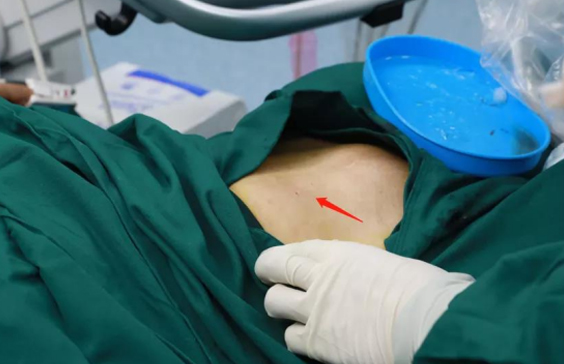Ovarian cyst is a common gynecological disease. Here in Guangzhou Royallee Cancer Center, "transvaginal puncture plus anhydrous alcohol curettage", a new remedy for ovarian cysts that is safer, painless, repeatable and non-invasive is accessible to all patients.
Treatment process and mechanism of action
A 1~2mm thick puncture needle is inserted into the ovarian cyst with the assistance of ultrasound to aspirate the fluid inside the cyst. Then sclerotherapy of the cyst is a crucial step when the aspiration is completed. The anhydrous alcohol will act as sclerosant to destroy the cells lining the cyst and necrotize them so they can’t secrete fluid. As a result, there will be no fluid in the cyst and the whole cavity will be closed by adhesions.
The puncture wound is very small and will heal naturally. During the surgery, the patient is put to sleep with intravenous anesthesia so they don’t feel any pain, and the postoperative pain is often mild and doesn’t require oral painkillers.
Technical advantages
Unlike conventional laparoscopic surgery, "transvaginal puncture plus anhydrous alcohol curettage" usually leaves almost no scars and bleeding because the trauma is very tiny, thus there is no need for hospitalization and patients can live and work as usual when the operation is done. The intervention assisted by ultrasound reduces surgical pain and complications such as postoperative adhesions, and almost achieves the same treatment outcome of laparoscopic surgery. Therefore, it has been widely accepted by virtue of its simplicity, accuracy, safety, economy, effectiveness and repeatability, shorter time and tiny side effects. Compared with conventional surgery that is highly unfriendly to fertile woman, puncture can better preserve ovarian function and avoid fertility impairment.
Where the technique applies
Puncture sclerotherapy applies to ovarian cysts with a diameter of 3 cm or more. Smaller cysts are often asymptomatic and don’t require treatment, so puncture is not a good choice. For larger simple cysts, puncture and aspiration will improve function of fallopian tubes because the blood circulation of surrounding tissues is ameliorated due to the reduced pressure on tubes and eased abdomen distension. Puncture also applies to simple cysts, chocolate-like cysts, plasma cysts, and ovarian crown cysts, but it is not fit for mucinous cysts, junctional tumors, or cysts caused by malignant tumors.
It is necessary to have a careful ultrasound evaluation to estimate the applicability of puncture. if there is a solid component within the cyst, puncture is not a good choice. Necessary tumor marker tests are also helpful in identifying the nature of ovarian cysts. Laparoscopic surgery should be considered during the puncture in the case of mucinous cysts because the disease is likely to reoccur.

